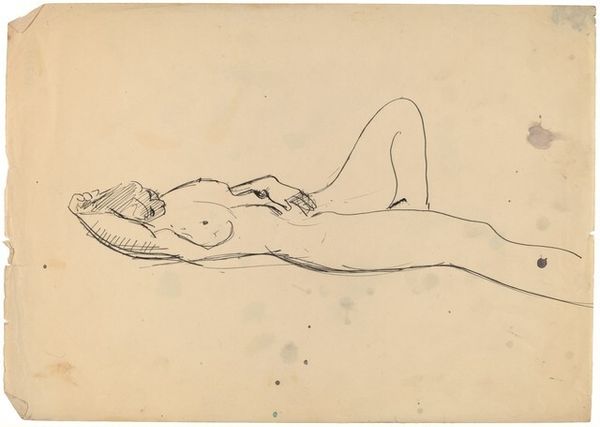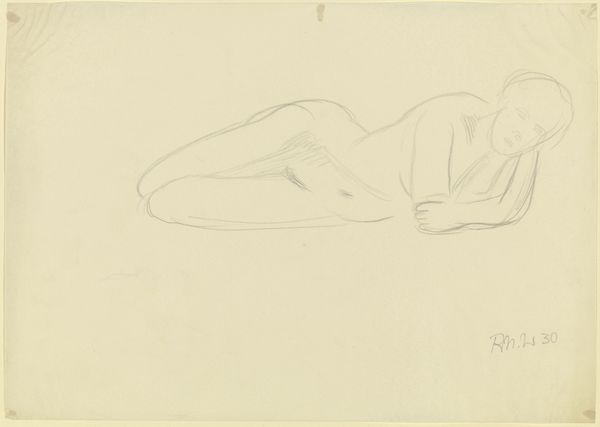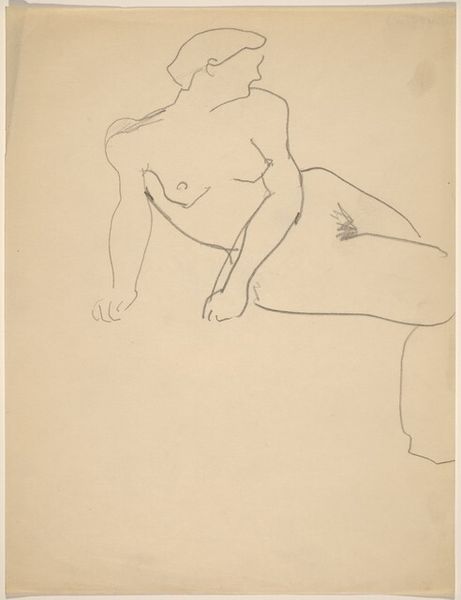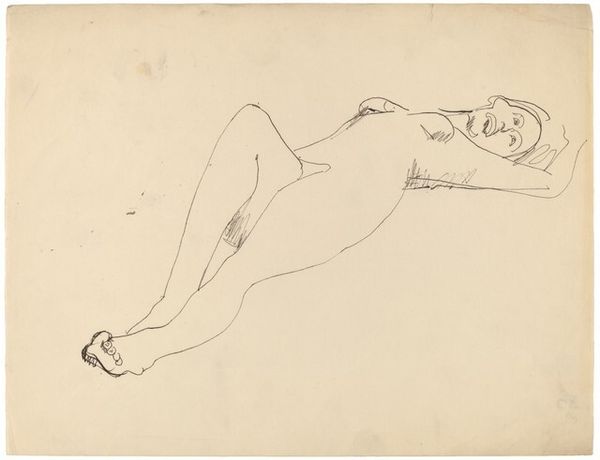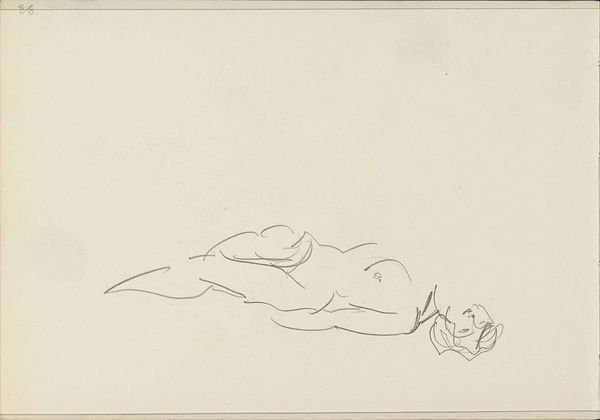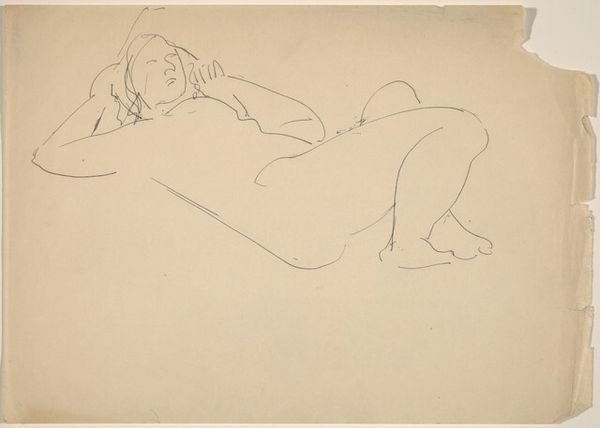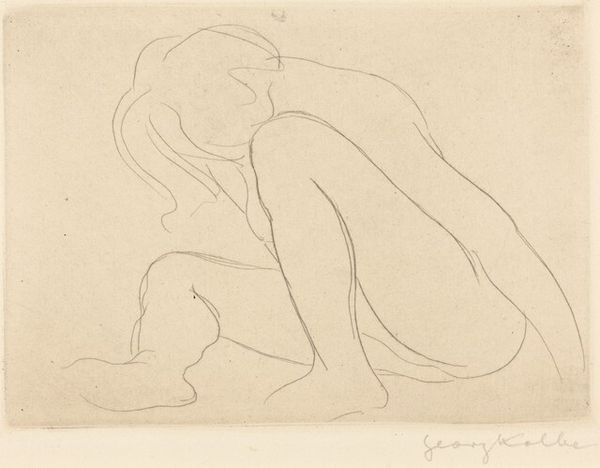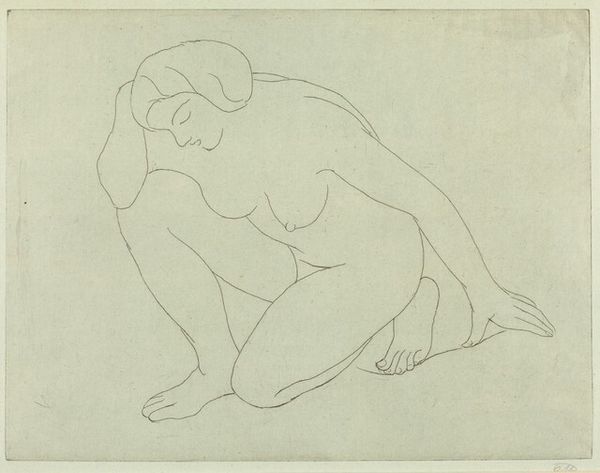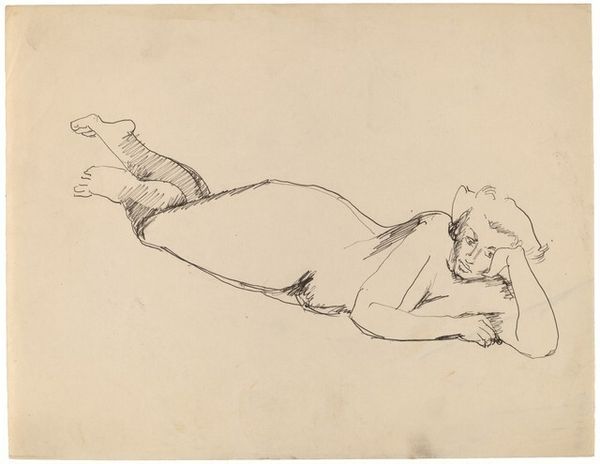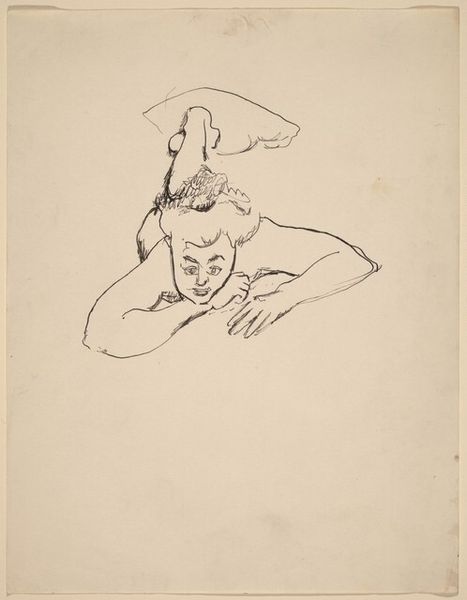
drawing, pencil
#
portrait
#
drawing
#
pencil sketch
#
figuration
#
pencil
#
academic-art
#
nude
Dimensions: sheet: 20.32 × 25.08 cm (8 × 9 7/8 in.)
Copyright: National Gallery of Art: CC0 1.0
Editor: We’re looking at Franz Kline’s "Reclining Nude" from 1946, rendered in pencil. It feels almost like a fleeting glimpse, a private moment captured quickly. What stands out to you most about this seemingly simple sketch? Curator: It's a dance between intimacy and abstraction, isn't it? Kline, later celebrated for those bold, architectural strokes of Abstract Expressionism, here offers something quieter, a tender study. See how he uses line—not just to define form, but to suggest shadow, weight, the very air around the figure. Do you get a sense of how his abstract work might have emerged from pieces such as this one? Editor: I do, now that you mention it. There's a confidence in the line that hints at his later work, even though the subject is clearly representational. It’s like he is boiling down the figure to its essence. I wonder why he chose to focus on such an intimate subject so early in his career. Curator: Perhaps it was a way to ground himself, to understand form and space before dismantling them in his abstractions. Many artists move back and forth between representation and abstraction. Maybe it’s about returning to something elemental, something profoundly human. It's as if the visible world becomes a touchstone before diving back into the unknown. What about the gaze of the model; what story does that elicit for you? Editor: That makes me consider this as something deeply personal to Kline, rather than just an exercise. It feels more like he is celebrating a love or muse. I never looked at abstract expressionism that way before - so much personality to unpack! Curator: Exactly! And I hope you start seeing traces of humanity in even the most abstract art pieces! Every stroke has its story.
Comments
No comments
Be the first to comment and join the conversation on the ultimate creative platform.

